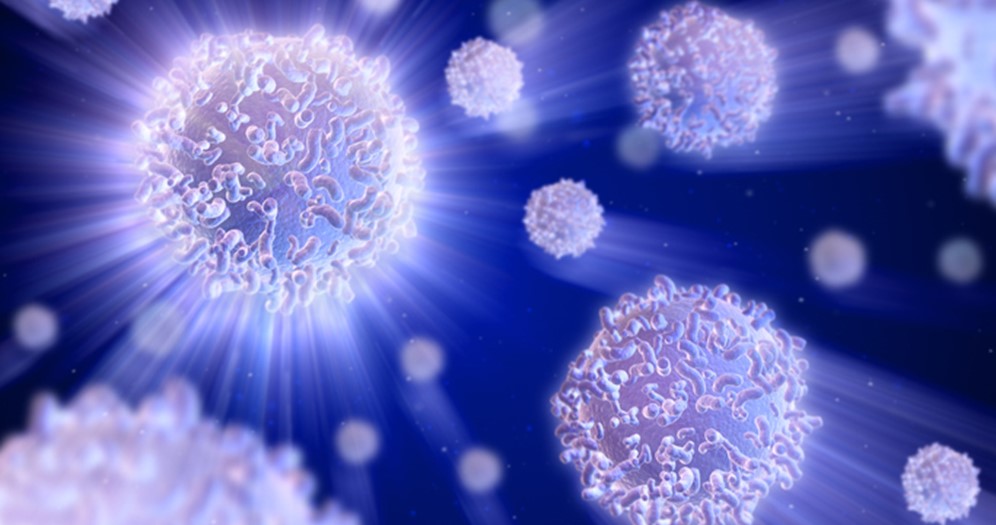|
September 2022 INVESTIGATING RACIAL DIFFERENCES IN MULTIPLE MYELOMAFeaturing: Wei Zhang, PhD
Investigators have identified distinct epigenetic pathways in African American and European American patients diagnosed with multiple myeloma, according to a Northwestern Medicine study published in the Journal of Hematology and Oncology. The findings improve the understanding of epigenetic mechanisms underlying disparities in disease diagnosis and reveal potential therapeutic targets. “We could utilize these population-specific epigenetic modifications to better diagnose in those patients or prevent multiple myeloma in a population-specific way,” said Wei Zhang, PhD, professor of Preventive Medicine in the Division of Cancer Epidemiology and Prevention and senior author of the study. Multiple myeloma (MM) occurs when cancerous white blood cells, specifically plasma cells, accumulate in bone marrow. Plasma cells are key for proper immune response, but in MM, cancerous plasma cells overtake normal blood-forming cells, leading to low blood counts. Diagnosis of MM is rare, however previous work has found that the disease is two to three times more likely to be diagnosed in African Americans than in European Americans. While risk factors such as socioeconomic factors and obesity can contribute to the different rates of diagnoses in this patient population, they don’t fully explain the increased risk, according to Zhang. “Multiple myeloma is very different, because so far, clinically or epidemiologically and based on known risk factors, we really don’t have the ability to distinguish patients with a higher or lower risk in our general population,” Zhang said. The team aimed to identify modifications in 5-hydroxymethylcytosines (5hmC), a known epigenetic biomarker of cancers that had yet to be investigated in the context of MM. In the study, the investigators used 5hmC-Seal, a chemical-labeling based technique which captures epigenetic modifications in fragments of DNA, and next-generation genome sequencing to profile DNA samples from 342 patients with MM and high-risk conditions — 227 European American and 115 African American patients. Of the identified top-ranking 500 genes with different 5hmC levels, the investigators found that 95 percent contained population-specific cellular pathways. Specifically, amino acid metabolism pathways were more prevalent in African American patients and cancer-related signaling pathways were more prevalent in European American patients. “We identified population-specific 5hmC related pathways between multiple myeloma patients and those with high-risk conditions, meaning there appears to be some population-specific biological pathway that leads to this disease in these patients,” Zhang said. According to Zhang, next steps include determining whether these population-specific epigenetic modifications contribute to different patient survival rates. “If we observe that population-specific 5hmC is related to differential patient survival, then we could actually utilize 5hmC as a novel biomarker that can help us monitor treatment response and detect patients with minimal residual disease in a population-specific way,” Zhang said. Zhou Zhang ’17 PhD, research assistant professor of Preventive Medicine in the Division of Cancer Epidemiology and Prevention, was the lead data analyst and a co-author of the study. Madina Sukhanova, PhD, assistant professor of Pathology in the Division of Cytogenetics, was also a co-author of the study. Zhang and Sukhanova are members of the Robert H. Lurie Comprehensive Cancer Center of Northwestern University. This work was supported in part by National Institutes of Health grants R01CA223662 and R33CA269100. This article was originally published in the Feinberg School of Medicine News Center on September 6, 2022. |
Wei Zhang, PhD, professor of Preventive Medicine in the Division of Cancer Epidemiology and Prevention, was senior author of the study published in the Journal of Hematology & Oncology.
Refer a PatientNorthwestern Medicine welcomes the opportunity to partner with you in caring for your patients.
|
You May Also Like
|
August 2022 |
August 2022 |






